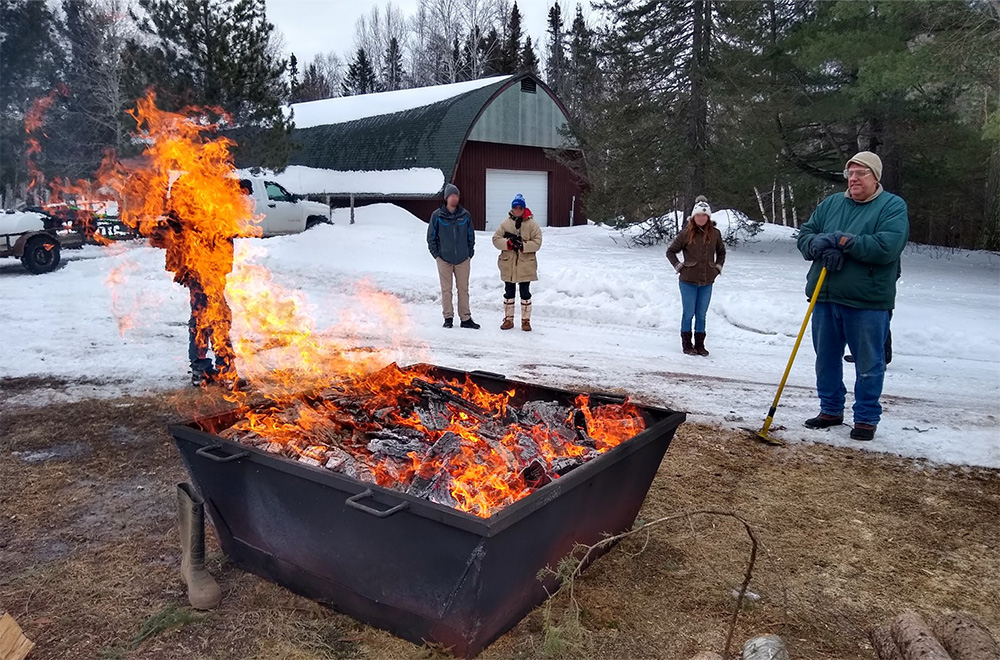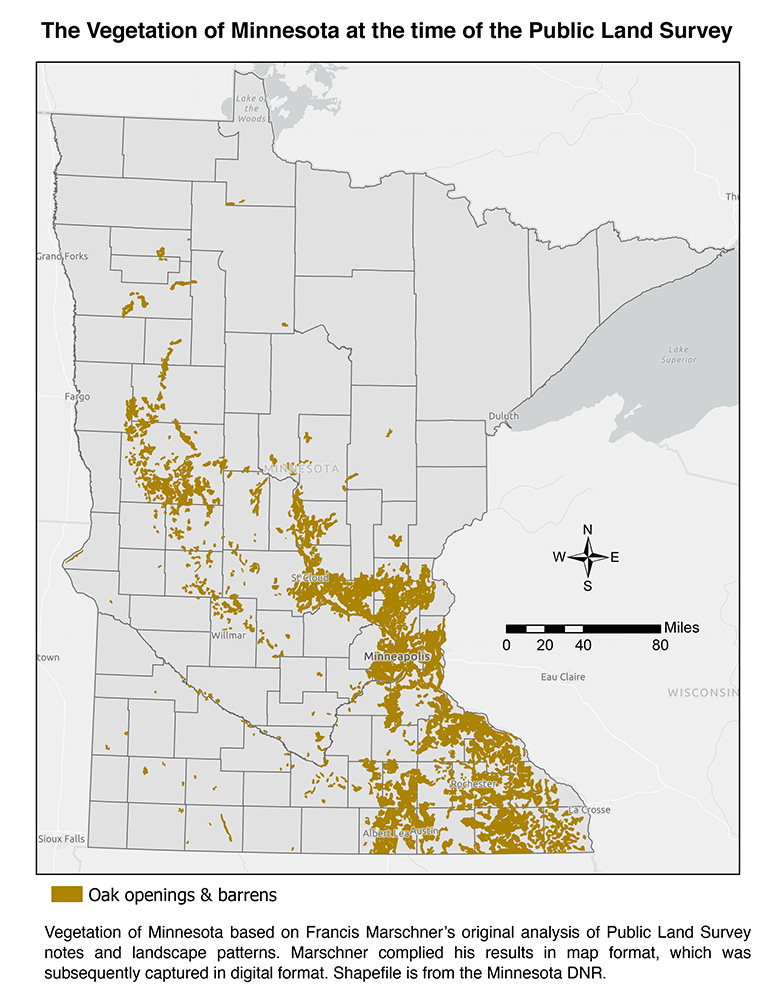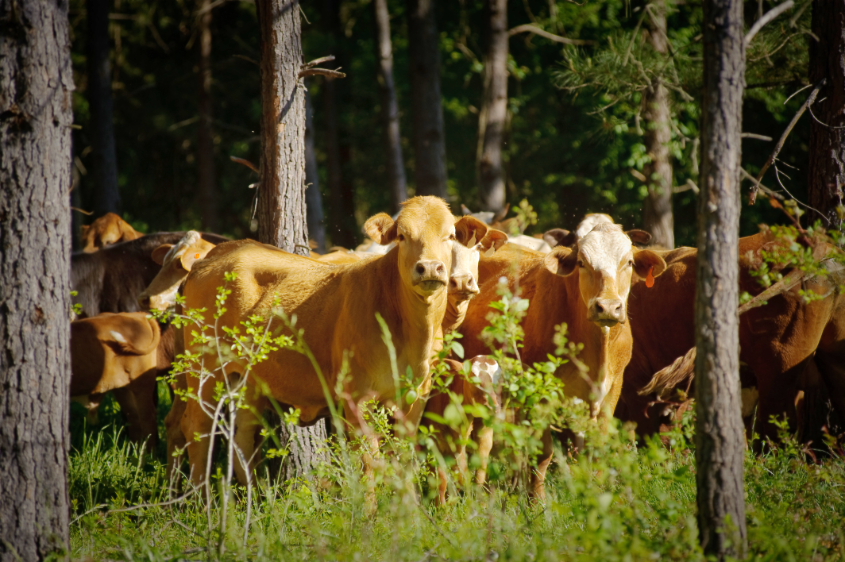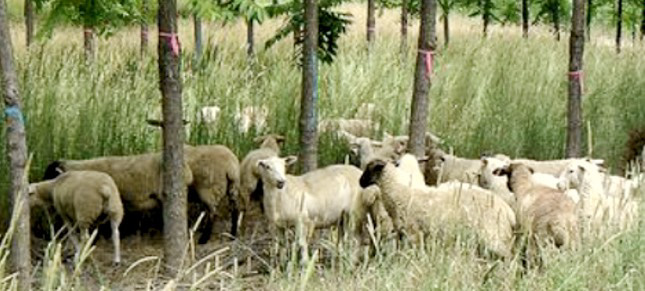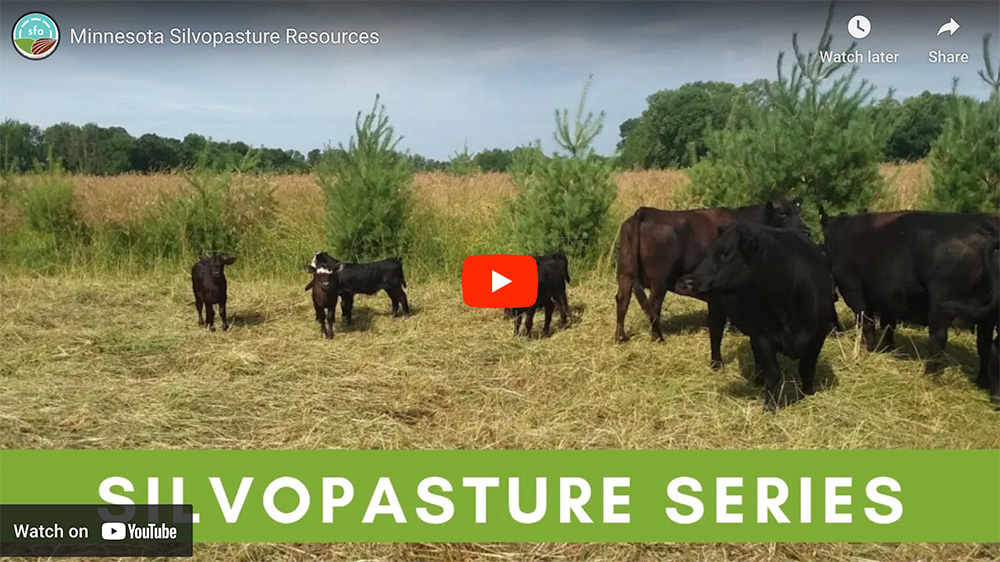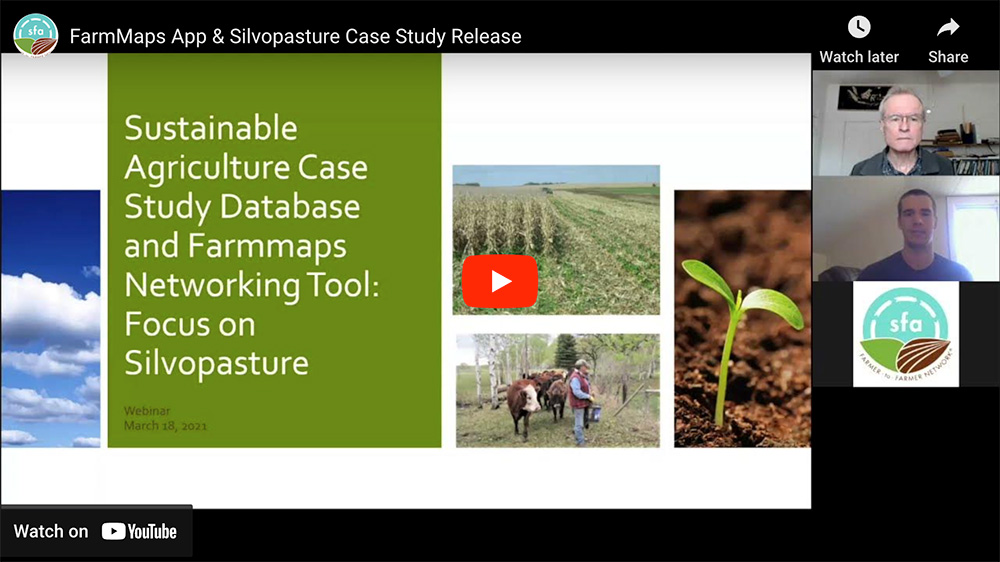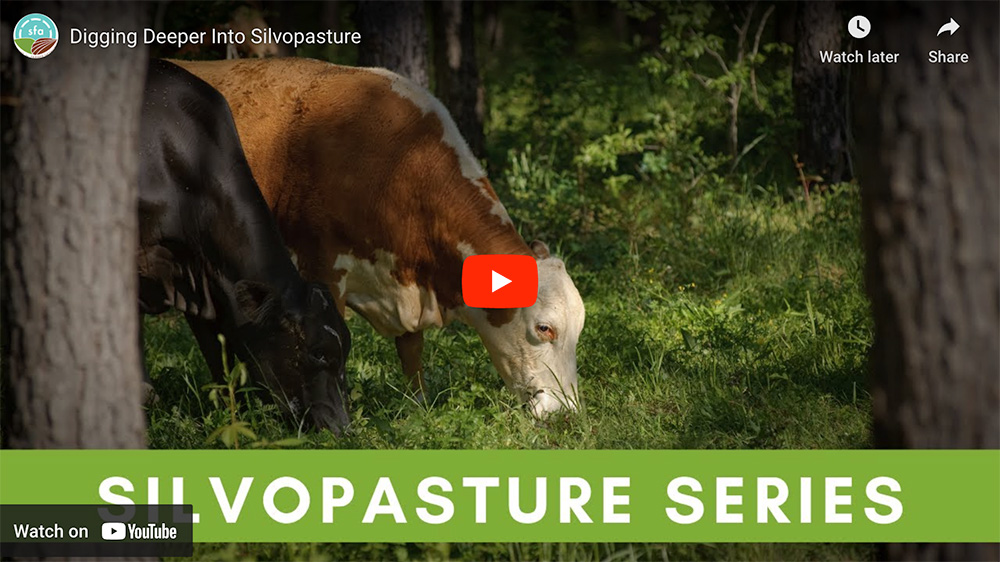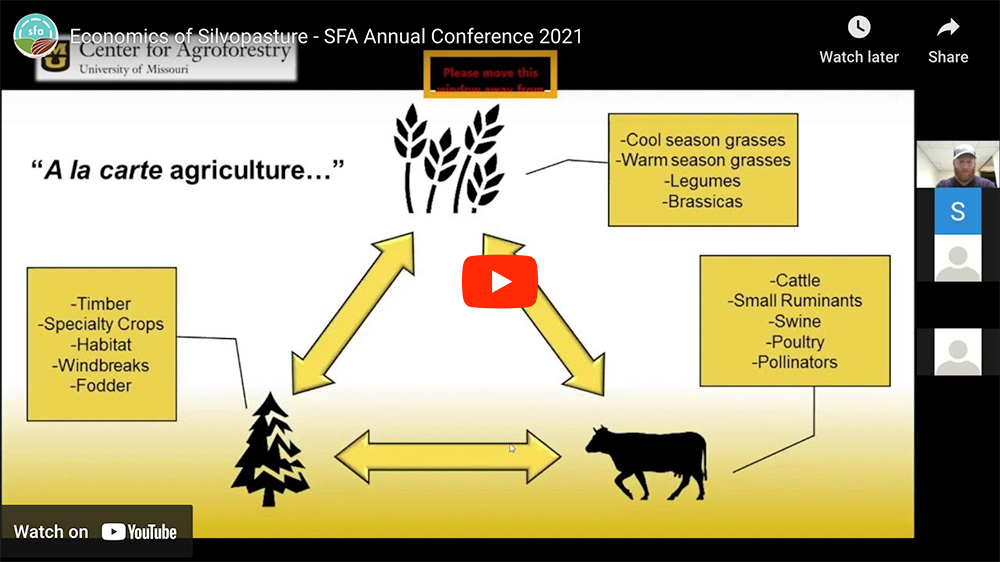Biochar as a Soil Amendment in Minnesota: Findings from Literature and Interviews
Biochar, a stable carbon created via pyrolysis (heating without the presence of oxygen), can be produced from the massive amounts of woody debris generated by tree removal and trimming, brush removal, woodlands management, and storm damage. Biomass that is currently burned or left to decompose releases most of the carbon back into the atmosphere. Conversion…
Read MoreMap of the Vegetation of Minnesota at the Time of the Public Land Survey
Presettlement vegetation of Minnesota based on Francis Marschner’s original analysis of Public Land Survey notes and landscape patterns. Marschner compiled his results in map format, which was subsequently captured in digital format. Download the PDF
Read MoreConverting Wooded Area Into a Silvopasture Site & Resource Assessment
Is silvopasture a good fit for this site at this time? Site history and current conditions: Observe the site, describe the vegetation, and discuss its management over approximately the last 30 years. Download the PDF
Read MoreThe How-Tos of Silvopasture Fact Sheet
Silvopasture intentionally combines trees, livestock, and forage into a single system on one site. The forage, trees, and livestock are managed and integrated to complement one another to increase productivity of the site. As a dynamic, symbiotic, and intensively managed grazing system, silvopasture is the sustainable (long-term) production of timber, forages, and livestock on the…
Read MoreSilvopasture Handbook
The Silvopasture Handbook is a compendium of web-based resources, professionals, universities, government agencies, non-profit organizations and other sources of silvopasture information, training and networking. This resource manual is designed to assist land managers and technical support staff on designing and implementing a Silvopasture system in woodlands. This is a starting place for you to quickly…
Read MoreSilvopasture in Minnesota Fact Sheet
Silvopasture is the deliberate integration of trees and grazing livestock operations on the same land. The trees, forage, and grazing livestock are managed intensively and must complement with one another to increase overall production. The sales of livestock provide annual income to the producer while fostering long-term economic benefits from trees such as sawtimber. In…
Read MoreMinnesota Silvopasture Resources
Managed well, silvopasture can improve profit and ecological function on the 660,000+ acres of unmanaged, grazed woodlands in Minnesota. Three MN resource professionals share their knowledge on grazing system infrastructure, management considerations, and programs available to assist producers.
Read MoreFarmmaps & Silvopasture Case Studies Release
FarmMaps is a new tool developed by the Center for Integrated Natural Resources and Agriculture Management to help you learn about soil health and silvopasture practices. It highlights farmers around Minnesota who are implementing innovative practices and allows you to connect with them.
Read MoreDigging Deeper into Silvopasture
Presenters discuss practically how to get started implementing Silvopasture on your farm, including planning design considerations, using EQIP, cost-share programs, and other funding opportunities.
Read MoreEconomics of Silvopasture
Take a deeper dive into the costs of silvopasture establishment and the economics of silvopasture production systems. The presenters share findings from research conducted throughout the United States.
Read More
